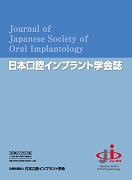Volume 4, Issue 2
Displaying 1-12 of 12 articles from this issue
- |<
- <
- 1
- >
- >|
-
1991Volume 4Issue 2 Pages 139-159
Published: September 30, 1991
Released on J-STAGE: February 25, 2019
Download PDF (8615K) -
1991Volume 4Issue 2 Pages 160-163
Published: September 30, 1991
Released on J-STAGE: February 25, 2019
Download PDF (945K) -
1991Volume 4Issue 2 Pages 164-169
Published: September 30, 1991
Released on J-STAGE: February 25, 2019
Download PDF (1392K) -
1991Volume 4Issue 2 Pages 170-175
Published: September 30, 1991
Released on J-STAGE: February 25, 2019
Download PDF (1174K) -
1991Volume 4Issue 2 Pages 176-182
Published: September 30, 1991
Released on J-STAGE: February 25, 2019
Download PDF (3054K) -
1991Volume 4Issue 2 Pages 183-196
Published: September 30, 1991
Released on J-STAGE: February 25, 2019
Download PDF (4893K) -
1991Volume 4Issue 2 Pages 197-205
Published: September 30, 1991
Released on J-STAGE: February 25, 2019
Download PDF (3096K) -
1991Volume 4Issue 2 Pages 206-213
Published: September 30, 1991
Released on J-STAGE: February 25, 2019
Download PDF (2978K) -
1991Volume 4Issue 2 Pages 214-220
Published: September 30, 1991
Released on J-STAGE: February 25, 2019
Download PDF (1662K) -
1991Volume 4Issue 2 Pages 221-230
Published: September 30, 1991
Released on J-STAGE: February 25, 2019
Download PDF (2788K) -
1991Volume 4Issue 2 Pages 231-237
Published: September 30, 1991
Released on J-STAGE: February 25, 2019
Download PDF (2277K) -
1991Volume 4Issue 2 Pages 238-245
Published: September 30, 1991
Released on J-STAGE: February 25, 2019
Download PDF (3204K)
- |<
- <
- 1
- >
- >|
